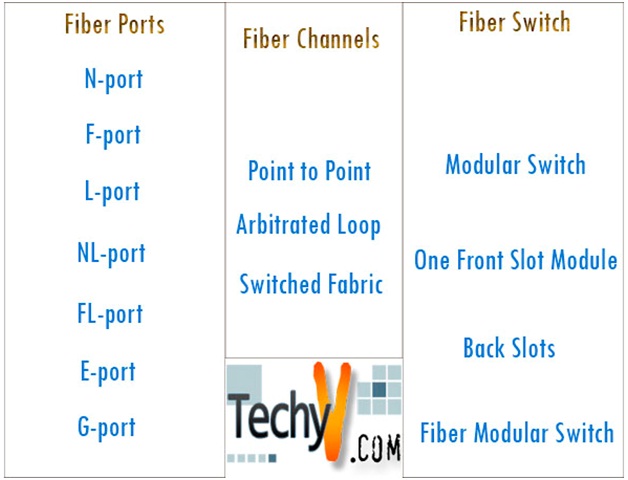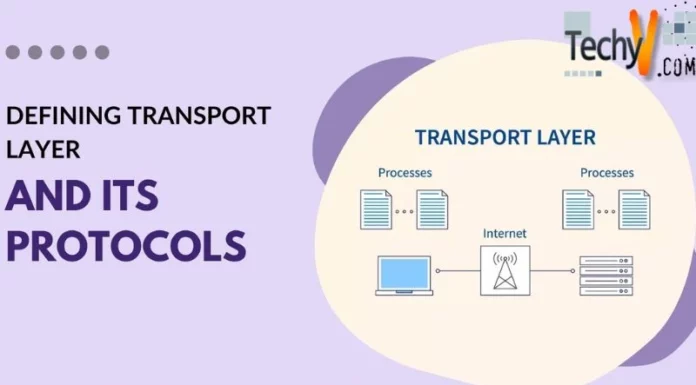Fiber Channels, Fiber Ports and Fiber Switch
Fiber Channels
Fiber Channels are twisted pair of copper coupled with several fiber optic cables. This type of technology began in the early 1988 which eventually received standards approval from ANSI in the year 1994.

This is considered a breakthrough in telecommunications because it reduced the size of bulky connectors, man can now receive information more swiftly even with very slim connective set of wiring. At first, it was only concerned with the simplification of connections and increase distance connectivity but as years passed by; more engineers were able to incorporate higher speed levels into it.
Types of Fiber Channels
Point to Point
This is the simplest type of connectivity and involves only two devices which are directly connected to one another.
Arbitrated Loop
This is a series type of connectivity which may include several devices to be interconnected by cabling several ports to one another using a ring formation. At present, port connection of this type has a maximum speed of 8GFC.
Switched Fabric
In this connectivity, all the devices are connected to one another through Fiber Channel Switches. This is by far the best type of Fiber channel because it provides optimized interconnections and allows simultaneous communication of different pairs of fabric ports.
Types of Fiber Ports
Fiber ports are connection types associated with a particular fiber channel network, which include the following types:
N-port
This is also known as network port. This type of port is used by node type of devices when being connected to a Fiber Channel Switch.
F-port
This is known as fabric port and is used by switch type of devices when connecting to Fiber Channel Fabrics.
L-port
This is known as loop port and is used by node devices when connecting to Fiber Channel Loops.
NL-port
This is known as Network—Loop Port and is used for node devices when connecting to both loop and switch types of fiber channel.
FL-port
This is known as Fabric-Loop Port and is used for switch devices when connecting to both fabric and loop types of fiber channel.
E-port
This is known as Extender port and is also used for switch devices when connecting to cascading Fiber Channel Switches.
G-port
This is known as General port is also used for switch devices when connecting to any general purpose port that can easily be configured to emulate similar types of ports.
Fiber Switch
Fiber switch is a network switch commonly used in the field of computer storage and is compatible with a particular fiber channel protocol. It is currently the primary component of many storage area networks because it permits multiple communication devices to be connected to one another and has the ability to perform tasks like redundancy, security and device name look-up. Fiber switches works through a process of zoning wherein mechanisms which disables and triggers unwanted traffic amongst different fabric nodes are carefully monitored and smoothened. There are several known manufacturers of Fiber Switches all over the world but the three most prominent manufacturers are QLogic, Cisco and Brocade.
Advantages of Fiber Switch
It is well known fact that fiber switches helps smoothen certain bumps in your network connection. But there are far more benefits that you can get from these small devices.
It is a must have that the bandwidth levels is properly maintained because if it decreases then there is a great possibility that it may bog down. Switches, act as your over-all monitoring personnel who take a look and carefully observes every packet of data flowing through your system. Because of this, it signal collisions will never be an issue for you. It maps the flow of these signals so it will not accumulate in a single port nor will it be necessary for all ports to receive the same signal. If the fiber switch senses any signal problems then it will not be sent anymore, so as not to cause heavy traffic in your connection.
The plugs and play element of fiber switches also has a significant role in its efficient performance. Since fiber switches has the ability to determine particular Ethernet addresses that are being used by each segment, it can also create a table of signal packets that regularly pass through it. This makes fiber switches more versatile to any type of ports and guarantees a faster Ethernet.
To sum it up, fiber switch has the ability to harness every available bandwidth for your convenience which a regular copper switch cannot do for you. It increases the bandwidths and manages to switch over other signals to other ports so as not cause traffic in your connection. It allows longer and wider distance coverage which makes it more efficient in sending more information to necessary fiber channels. Lastly, fiber switch is more secured compared to regular switches because of its structure.
Types of Fiber Switch
Modular Switch
This is a type of switch which provides you three front slots coupled with two rear slots in case you will need one for either copper or fiber type gigabit modules.
One Front Slot Module
This provides you eight port with 10/100 unshielded pair of twisted copper coupled with RJ 45 connectors while another set of modules composed of 100 Base Fiber FX in ST coupled with SC connectors to further provide your necessity to any kind of fiber which you may need to install in it.
Back Slots
This type of switch has the ability to provide gigabit multi mode fiber, gigabit copper and gigabit single mode fiber. It even has the capacity to transform into an all fiber switch that can fully load any type of fiber modules.
Fiber Modular Switch
This is designed to provide you with quite a number of management options. The file transfer packets are very evident which can definitely help you identify which port is up or currently down. It even has the ability to increase the bandwidth by simply hooking a switch to another switch using full duplex. Fiber modular switches allow you to configure ten ports by using just one network while doing the same with another set of ten ports to a different one.

















